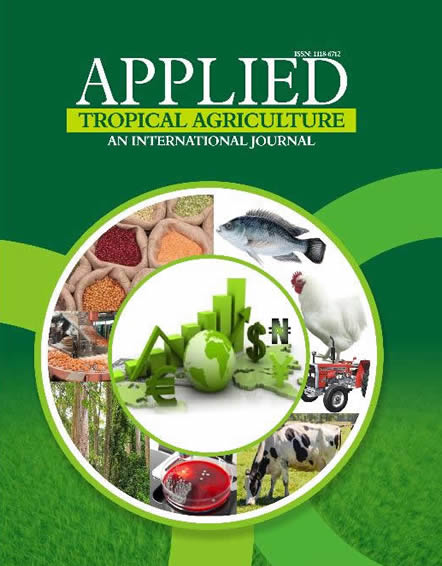This study was carried out to determine the effects of Moringa oleifera leaf meal (MOLM) on the performance, nutrient digestibility and carcass characteristics of broiler chickens. Fresh leaves of Moringa oleifera were harvested from the premises of the Lagos State Polytechnic, Ikorodu, and Olabisi Onabanjo University, Ayetoro campus, Nigeria. The leaves were then sundried for four days and milled. A total of 200 day-old unsexed broiler chicks of similar weight (Anak strain) were sourced from Obasanjo Farms, Ibadan, South western Nigeria. The broiler chicks were randomly allotted to five treatment groups. 0%, 5%, 10%, 15% and 20% of MOLM were incorporated into the broiler starter and finisher diets which constituted the five treatment groups. Each group was replicated four times at 10 birds per replicate Feed intake values at the starter phase were significantly (p<0.05) different across the treatment groups, but statistically similar (p>0.05) at the finisher phase. The weight gain (WG) was statistically similar (p>0.05) at the starter phase but significantly (p<0.05) different at the finisher phase, with birds fed with 15% MOLM based diet having the highest WG. The feed conversion ratio of the birds were not significantly (p>0.05) different at the starter phase, but differed significantly (P<0.05) at the finisher phase. Protein efficiency ratio (PER) was significantly higher (p<0.05) in birds fed the control diet and 15% MOLM diet. Significantly higher (p<0.05) crude protein digestibility was obtained in birds fed control diet and 15% MOLM than other treatments. Carcass characteristics showed significantly higher (p<0.05) values of dressing percentage in birds fed control diet and 15% MOLM. Lower values of breast, wings, and abdominal fat were obtained in birds fed with 10% and 20%% MOLM diets than other treatments. Overall, the best significant improvement in the response indices were obtained in birds fed 15% MOLM.
PAPER TITLE :EFFECTS OF MORINGA OLEIFERA LEAF MEAL ON PERFORMANCE, NUTRIENT DIGESTIBILITY AND CARCASS QUALITY OF
APPLIED TROPICAL AGRICULTURE | VOLUME 21 NUMBER 1 2016
Paper Details
- Author(s) : Tijani, L. A1; Akanji, A.M.; Agbalaya, K. 1 and Onigemo, M.1
- Abstract:


